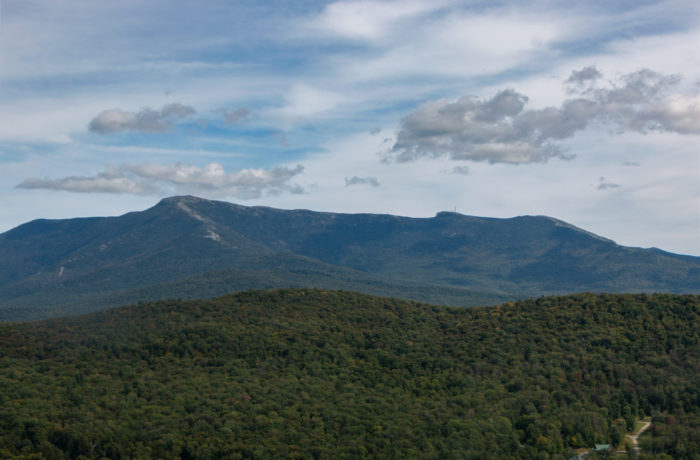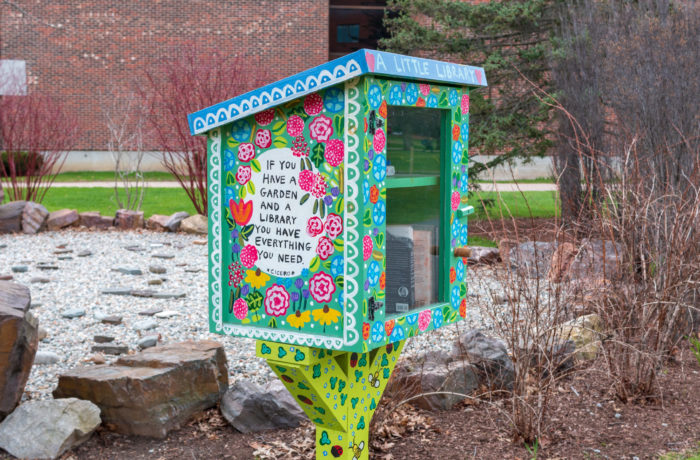By Jack Caron
Hayley Craddock ’19 sat atop the wooden frame of a small rectangular house, nailing down boards for a roof with her girlfriend Michaela Bicknell. They are building a tiny house, a small new-age mobile home built like a traditional wooden house, but scaled down to fit on a 28’x 8’ trailer bed. Theirs is currently parked at Bicknell’s parents’ home in Vergennes. The couple began construction after purchasing the trailer in August. The house is already livable with everything installed except plumbing.
Pioneered by millennials, tiny houses are a growing trend in alternative living spaces. The movement pursues a minimalistic lifestyle through small-scale housing, reducing consumption and waste. Traditional homeowners constantly use more than they need in their day-to-day life both in energy and in accrued possessions. Tiny house owners aim to reduce their environmental footprint.
Craddock and Bicknell have been gradually building their future homes while Craddock is still enrolled as a student. Not only will she have a permanent residence to live in by the time she finishes school, she and her girlfriend will have built the house with their own hands.


“Learning how to wire an entire house to have working electricity was the most satisfying aspect of the hands-on process,” Craddock said.
So just what are the environmental and economic benefits of living in a tiny house? According to a TinyHouseBuild.Com infographic with data from the Chicago tribune and the EPA, the average home consumes roughly 12,773 kWh of electricity a year, compared to a tiny houses which uses about 914. On the other end of the spectrum the average home releases 28,000 pounds of CO2 into the atmosphere compared to a tiny house’s 2,000. A tiny house has a substantially lesser impact on the environment than a traditional home and is less expensive to the homeowner through reduced energy bills. The smaller living space also consists of far fewer materials and does not require nearly as many resources to construct.
Instead of renting an apartment for years after college, not getting any closer to ownership, Craddock and Bicknell are taking matters into their own hands and creating a stable place to live.

Craddock and Bicknell have a few prospective locations for their home once it becomes their primary residence which the pair believe will be in Jan. of 2018. Most of their options right now consist of friends who own land plots and will let them stay on a small level area. They hope in the future to own a land plot where other tiny house owners can also rent a space. The two plan to convert the house to solar energy within the first few years of living in it to use even less electricity and make the home more self-sustainable.
It is the choosing of a location for a tiny house where people may run into trouble. Vermont’s zoning laws classify tiny houses as RVs according to a 2016 Burlington Free Press article by Alexandre Silberman. This may limit which towns the tiny house can be parked in for residence unless the house can qualify as a smaller tangent of a larger home. If this criteria cannot be met, the tiny house can only be placed where RV camping is allowed. This legal ambiguity leads some tiny house owners to live under the radar to avoid zoning issues. People who choose to pursue this lifestyle hope to change zoning laws in Vermont and other environmentally progressive states as the Tiny House movement continues to grow.
One aspect that may turn people off of tiny houses is close-quarters cohabitation. What may deter others from this alternative lifestyle is a welcome challenge to Craddock and Bicknell.
“The best way to adapt to something is to leave your comfort zone. What better way to do that then to shove yourself into a tiny house with the person you love?” said Craddock.


